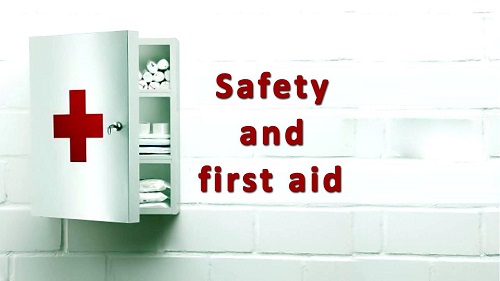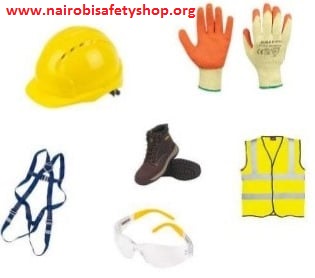Smart Safety refers to the integration of advanced technologies and data-driven approaches to enhance safety management and ensure a safer work environment. It leverages innovations in technology to improve safety practices, prevent incidents, and respond effectively to emergencies. Here’s an in-depth exploration of Smart Safety, its components, and its benefits:
1. Understanding Smart Safety
1.1 Definition and Concept
• Smart Safety: The use of modern technologies such as IoT (Internet of Things), AI (Artificial Intelligence), machine learning, and advanced analytics to enhance safety protocols, monitor risks, and manage safety operations in real-time.
• Objective: To proactively identify and mitigate safety risks, improve response times, and create a more efficient and effective safety management system.
1.2 Key Components of Smart Safety
• Technology Integration: Incorporating digital tools and technologies into safety practices, including sensors, wearables, and automated systems.
• Data Analytics: Utilizing data collected from various sources to gain insights into safety trends, risks, and performance.
• Real-Time Monitoring: Implementing systems that provide real-time information on safety conditions and incidents.
• Automated Response Systems: Using automation to streamline safety processes, such as incident alerts and emergency responses.
2. Technologies Driving Smart Safety
2.1 Internet of Things (IoT)
• Connected Devices: IoT devices, such as sensors and wearables, monitor environmental conditions (e.g., temperature, gas levels) and employee health (e.g., heart rate, activity levels).
• Data Collection: Collects real-time data on various safety parameters and transmits it to central systems for analysis.
2.2 Artificial Intelligence (AI) and Machine Learning
• Predictive Analytics: AI algorithms analyze historical and real-time data to predict potential safety risks and incidents.
• Pattern Recognition: Machine learning models identify patterns and anomalies in safety data to enhance risk assessment and prevention.
2.3 Wearable Technology
• Health Monitoring: Wearables track vital signs, fatigue levels, and other health indicators, alerting employees and supervisors to potential issues.
• Location Tracking: Monitors the location of employees in hazardous environments, ensuring their safety and facilitating quick rescue if needed.
2.4 Automated Safety Systems
• Emergency Alerts: Automated systems send instant alerts to employees and emergency responders in case of incidents, such as fire, chemical spills, or machinery failures.
• Safety Protocols: Automates safety procedures, such as shutting down machinery or initiating evacuation protocols, based on predefined conditions.
2.5 Data Visualization and Dashboards
• Real-Time Dashboards: Provides visual representations of safety data, including incident rates, risk levels, and compliance metrics, to support decision-making.
• Trend Analysis: Displays historical data trends to identify areas for improvement and track the effectiveness of safety initiatives.
3. Benefits of Smart Safety
3.1 Enhanced Risk Management
• Proactive Risk Identification: Early detection of potential hazards through real-time monitoring and predictive analytics helps prevent incidents before they occur.
• Improved Risk Assessment: Data-driven insights allow for more accurate risk assessments and targeted interventions.
3.2 Increased Efficiency and Productivity
• Streamlined Processes: Automation reduces the need for manual intervention in safety processes, freeing up time for other tasks and improving overall efficiency.
• Reduced Downtime: Early detection and automated responses minimize operational disruptions and reduce downtime due to safety incidents.
3.3 Improved Incident Response
• Faster Reaction Times: Real-time alerts and automated systems enable quicker responses to incidents, minimizing their impact and ensuring prompt action.
• Enhanced Communication: Efficient communication channels and automated alerts improve coordination among safety teams and emergency responders.
3.4 Greater Employee Safety and Well-being
• Real-Time Monitoring: Continuous monitoring of employees’ health and safety conditions enhances their well-being and reduces the risk of accidents and health issues.
• Personalized Alerts: Wearable technology and smart systems provide personalized alerts to employees, helping them avoid potential hazards and stay safe.
3.5 Cost Savings
• Reduced Insurance Premiums: Improved safety management and risk reduction can lead to lower insurance premiums and fewer claims.
• Lower Incident Costs: Preventing incidents and minimizing their impact reduces the costs associated with accidents, such as medical expenses, legal fees, and equipment repairs.
4. Implementing Smart Safety Solutions
4.1 Assess Needs and Objectives
• Identify Requirements: Assess the specific safety needs of your organization and determine the goals you aim to achieve with smart safety solutions.
• Select Technologies: Choose technologies that align with your safety objectives and integrate seamlessly with your existing systems.
4.2 Develop a Strategy
• Implementation Plan: Create a detailed plan for deploying smart safety technologies, including timelines, resource requirements, and integration steps.
• Training and Support: Provide training for employees and safety teams on how to use new technologies and understand the data they generate.
4.3 Monitor and Evaluate
• Performance Tracking: Continuously monitor the performance of smart safety systems and evaluate their impact on safety outcomes.
• Continuous Improvement: Use data insights to make informed decisions and continuously improve safety practices and protocols.
4.4 Ensure Compliance and Security
• Regulatory Compliance: Ensure that smart safety technologies comply with relevant safety regulations and standards.
• Data Security: Implement robust security measures to protect sensitive safety data and ensure privacy.
Smart Safety represents a transformative approach to managing safety in modern workplaces. By leveraging advanced technologies and data-driven strategies, organizations can enhance risk management, improve efficiency, and ensure the well-being of their employees. Implementing smart safety solutions not only leads to a safer and more productive work environment but also delivers significant cost savings and competitive advantages.
As technology continues to evolve, embracing smart safety practices will be essential for staying ahead of potential risks and maintaining a proactive safety culture. The integration of smart safety technologies is not just a trend but a fundamental shift towards a more intelligent, responsive, and effective approach to safety management.
READ MORE
Safety Culture Video
Occupational Health and Safety Management Systems(OHSMS)



















